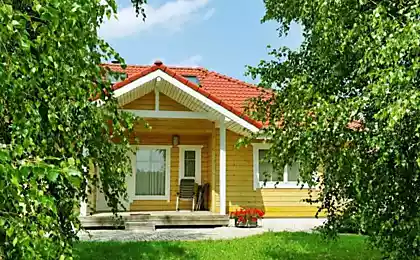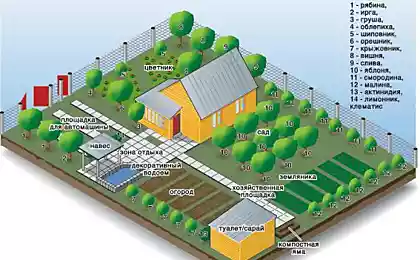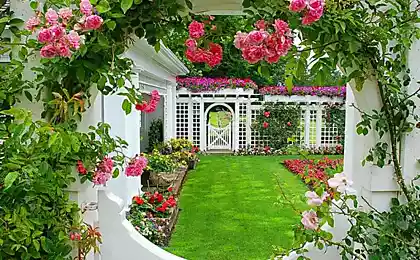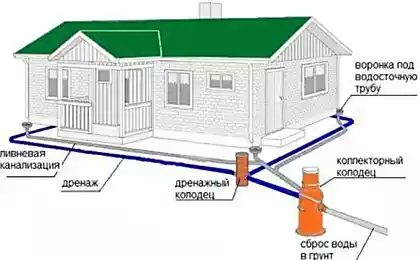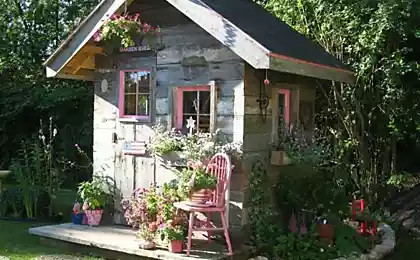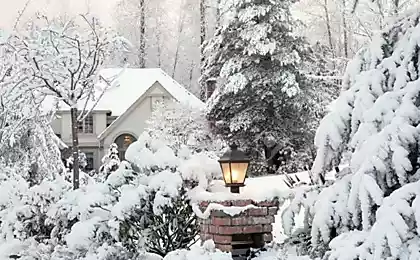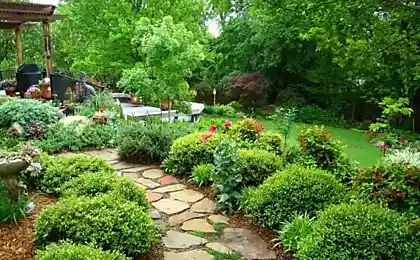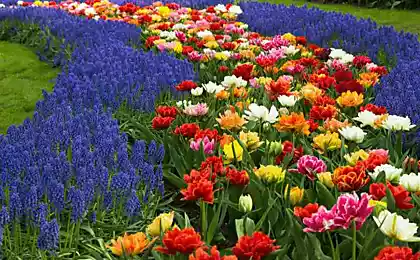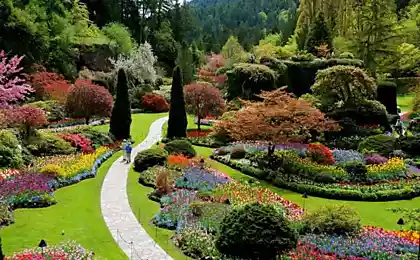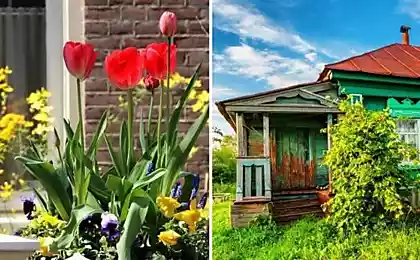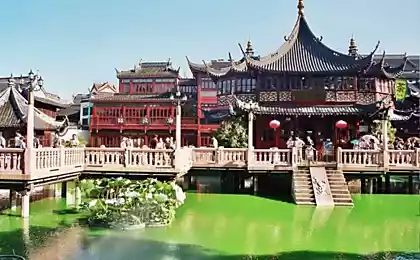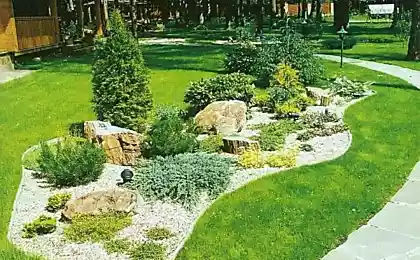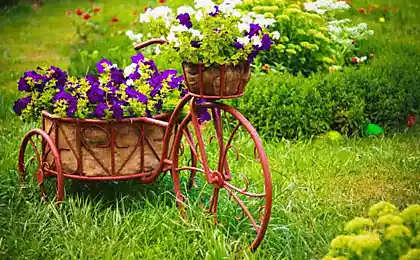472
Lazy garden — ideal for small area
This "lazy" method of use of the land. To the West is the direction of gardening (forest gardening, agroforestry, edible landscape) in the last ten years is experiencing a boom: they write books, make films, crowds permaculture designers are the courses on creating lessdo. Of those materials that I managed to find the following picture.
Thirty one million six hundred eighty nine thousand four hundred sixteen
Leased is a garden that imitates a productive, sustainable, self-sufficient ecosystem of the forest community. Forests are huge relative to its area of biomass, do not suffer from pests, do not require fertilizing and give an incomparable feeling of peace and fullness of life. In the tropics, leaside are designed and created from prehistoric times to the present day. Leased — a convenient form for small infield, but is not well suited for intensive farm.
Leased not require any resource from the side (mulch, manure, etc.), all grown on site. The soil in lessdo not digging, the vast majority of plants — perennials, planted according to parusnosti — tall trees, under their canopy in partial shade, the bushes, underneath the grass plants, the trunks twisted vines.
At the outer border of the garden is usually planted a dense hedge of hardy plants, which extinguish wind, closer to the center — more capricious fruit plants over large distances, so they better illuminated by the sun, and in between berry bushes and perennial vegetables, "the glades" — an annual vegetable. In the woods is always more warm and humid microclimate than in the open, and this has a positive effect on plants. In leaside should be the corners, giving food and shelter to wild animals, birds and insects.
Fertilizers ideally, not used, plants are fed by a natural mulch of litter, hay mass and scraps. Pests should theoretically destroy wasps-birds-frogs.
But it is a theory and practice in the temperate climate zone lags behind. The only Mature leased in the cool part of the world thirty years ago, planted in England by Robert HART, who wanted to create a Spa ambience for himself and his disabled brother. The garden is located on the hill which was once a Celtic monastery, and HART thought it was a mystical place.
In the garden grew normal to the area of Apple, pear, currant, gooseberry etc., on external border of a high variety inside short. The owner cut the burgeoning bushes, passed through a pulverizer and either composted or used as mulch. Plants are also fertilized the popular Western "organists" by seaweed.
Many visitors noted with delight that the garden gives a large number of products and pleases the soul. In 2000, HART has died at the age of 87 years, the new owners have ceased to care for the garden and closed it to visitors, but gardeners continue to go back there — they say the place still has a mystical appeal.
Eighty million four hundred fifty seven thousand nine hundred fifty seven
Current star agro-forestry Martin Crawford, his 20-year-old garden is located in the South of England. In his garden many exotic plants, including bamboo, which for our climate is not suitable.
The most interesting technology agroforestry on small areas it seems that lassad itself provides power. To do this, in a young garden of about half of the plantings shall be plants that create soil fertility.
Of these "sources of fertility" half — nitrogen-fixing bacteria, and the rest is weeds with deep roots, reaching useful elements from the deep layers of the subsoil, and something fast growing and resistant to mowing, to enrich the garden green ground. In addition to herbs, nitrogen-fixing root using trees with the same properties (yellow acacia, for example) that are planted in one pit of a fruit tree to share with a neighbor nitrogen and softened the wind.
Seventy five million eight hundred sixteen thousand one hundred thirty nine
The first years, the tree-sitter is cut so that it does not shade a neighbor, but when you need a tree grows, the tree-sitter is cut down and allowed to mulch. Crawford writes that for normal fruiting of the Irga or hawthorn is needed for every sq m of the crown of 0.2 sq m of nitrogen-fixing plants sitting side by side in full sun. Apple on this technology even more necessary.
Also considered to be very important to understand the composition of the herbaceous layer, which should consist of helping plants and not weeds that hinder the trees. The findings of our academics down to the same — P. Trannoy wrote about the experiences in Timiryazevka, which showed that grass seed mixtures alone or in combination with legumes have a negative impact on the growth of Apple trees, sometimes so much that the roots of the tree came into the area turfing; legumes impact on Apple positively, especially Lupin — Lupin near the length of shoots of Apple trees in 2 times higher than near the rose clover, and 1.7 times — near alfalfa, lupine also obtained the maximum growth yields. Cereal on the tree impacted only Kentucky bluegrass.
Ninety three million nine hundred sixty seven thousand three hundred twenty eight
For herbaceous layer of lessdo Western sources recommend a lot of herbs — comfrey, clover, alfalfa, horseradish, rhubarb, sorrel, burdock and so on. History of vegetable crops — it is dark, I have long puzzled over which of these plants can be considered a forest and hope that they form mycorrhiza with pileate mushrooms — guides, ancestors rhubarb, horseradish and sorrel growing in open areas, but why these plants are shade tolerant?
Probably, shade-tolerant forest plants have ancestors, and thus, when sown under Apple trees will help to settle down the mycorrhiza. Comfrey — forest, shade-tolerant, and it grows rapidly after mowing, is capable of dislodging even the couch grass and under the trees should be in place.
In simplified form, landing a self-sustaining leased on poor soils in arid climates is: plant trees for some longer ranges than is recommended for nurseries, around trees — bushes, and Saderat it all leguminous herbs in the mix with some growing melliferous plant with a taproot. These grasses periodically mowed into mulch.
After a few years the trees will grow, the mass of leaf litter and twigs from pruning will give more of mulch, which will be able to settle down forest mushrooms, will appear the shade, the humidity will increase and the soil will be much richer. Legumes and weeds in the penumbra will begin to decay, and they can be replaced on perennial vegetables and forest plants, of which mushrooms, podselenie in the "forest floor", also can form a mycorrhiza. In my opinion, it's very simple, and therefore should work.
Thirteen million five hundred sixteen thousand two hundred five
My idea of leased attracts because it allows you to do without outside sources of mulch and to keep the land in its natural forest environment. published
Author: Sergei Skorobogatov
P. S. And remember, only by changing their consumption — together we change the world! ©
Join us in Facebook , Vkontakte, Odnoklassniki
Source: www.pervorod.ru/blogs/eto-interesno/o-lesosade
Thirty one million six hundred eighty nine thousand four hundred sixteen
Leased is a garden that imitates a productive, sustainable, self-sufficient ecosystem of the forest community. Forests are huge relative to its area of biomass, do not suffer from pests, do not require fertilizing and give an incomparable feeling of peace and fullness of life. In the tropics, leaside are designed and created from prehistoric times to the present day. Leased — a convenient form for small infield, but is not well suited for intensive farm.
Leased not require any resource from the side (mulch, manure, etc.), all grown on site. The soil in lessdo not digging, the vast majority of plants — perennials, planted according to parusnosti — tall trees, under their canopy in partial shade, the bushes, underneath the grass plants, the trunks twisted vines.
At the outer border of the garden is usually planted a dense hedge of hardy plants, which extinguish wind, closer to the center — more capricious fruit plants over large distances, so they better illuminated by the sun, and in between berry bushes and perennial vegetables, "the glades" — an annual vegetable. In the woods is always more warm and humid microclimate than in the open, and this has a positive effect on plants. In leaside should be the corners, giving food and shelter to wild animals, birds and insects.
Fertilizers ideally, not used, plants are fed by a natural mulch of litter, hay mass and scraps. Pests should theoretically destroy wasps-birds-frogs.
But it is a theory and practice in the temperate climate zone lags behind. The only Mature leased in the cool part of the world thirty years ago, planted in England by Robert HART, who wanted to create a Spa ambience for himself and his disabled brother. The garden is located on the hill which was once a Celtic monastery, and HART thought it was a mystical place.
In the garden grew normal to the area of Apple, pear, currant, gooseberry etc., on external border of a high variety inside short. The owner cut the burgeoning bushes, passed through a pulverizer and either composted or used as mulch. Plants are also fertilized the popular Western "organists" by seaweed.
Many visitors noted with delight that the garden gives a large number of products and pleases the soul. In 2000, HART has died at the age of 87 years, the new owners have ceased to care for the garden and closed it to visitors, but gardeners continue to go back there — they say the place still has a mystical appeal.
Eighty million four hundred fifty seven thousand nine hundred fifty seven
Current star agro-forestry Martin Crawford, his 20-year-old garden is located in the South of England. In his garden many exotic plants, including bamboo, which for our climate is not suitable.
The most interesting technology agroforestry on small areas it seems that lassad itself provides power. To do this, in a young garden of about half of the plantings shall be plants that create soil fertility.
Of these "sources of fertility" half — nitrogen-fixing bacteria, and the rest is weeds with deep roots, reaching useful elements from the deep layers of the subsoil, and something fast growing and resistant to mowing, to enrich the garden green ground. In addition to herbs, nitrogen-fixing root using trees with the same properties (yellow acacia, for example) that are planted in one pit of a fruit tree to share with a neighbor nitrogen and softened the wind.
Seventy five million eight hundred sixteen thousand one hundred thirty nine
The first years, the tree-sitter is cut so that it does not shade a neighbor, but when you need a tree grows, the tree-sitter is cut down and allowed to mulch. Crawford writes that for normal fruiting of the Irga or hawthorn is needed for every sq m of the crown of 0.2 sq m of nitrogen-fixing plants sitting side by side in full sun. Apple on this technology even more necessary.
Also considered to be very important to understand the composition of the herbaceous layer, which should consist of helping plants and not weeds that hinder the trees. The findings of our academics down to the same — P. Trannoy wrote about the experiences in Timiryazevka, which showed that grass seed mixtures alone or in combination with legumes have a negative impact on the growth of Apple trees, sometimes so much that the roots of the tree came into the area turfing; legumes impact on Apple positively, especially Lupin — Lupin near the length of shoots of Apple trees in 2 times higher than near the rose clover, and 1.7 times — near alfalfa, lupine also obtained the maximum growth yields. Cereal on the tree impacted only Kentucky bluegrass.
Ninety three million nine hundred sixty seven thousand three hundred twenty eight
For herbaceous layer of lessdo Western sources recommend a lot of herbs — comfrey, clover, alfalfa, horseradish, rhubarb, sorrel, burdock and so on. History of vegetable crops — it is dark, I have long puzzled over which of these plants can be considered a forest and hope that they form mycorrhiza with pileate mushrooms — guides, ancestors rhubarb, horseradish and sorrel growing in open areas, but why these plants are shade tolerant?
Probably, shade-tolerant forest plants have ancestors, and thus, when sown under Apple trees will help to settle down the mycorrhiza. Comfrey — forest, shade-tolerant, and it grows rapidly after mowing, is capable of dislodging even the couch grass and under the trees should be in place.
In simplified form, landing a self-sustaining leased on poor soils in arid climates is: plant trees for some longer ranges than is recommended for nurseries, around trees — bushes, and Saderat it all leguminous herbs in the mix with some growing melliferous plant with a taproot. These grasses periodically mowed into mulch.
After a few years the trees will grow, the mass of leaf litter and twigs from pruning will give more of mulch, which will be able to settle down forest mushrooms, will appear the shade, the humidity will increase and the soil will be much richer. Legumes and weeds in the penumbra will begin to decay, and they can be replaced on perennial vegetables and forest plants, of which mushrooms, podselenie in the "forest floor", also can form a mycorrhiza. In my opinion, it's very simple, and therefore should work.
Thirteen million five hundred sixteen thousand two hundred five
My idea of leased attracts because it allows you to do without outside sources of mulch and to keep the land in its natural forest environment. published
Author: Sergei Skorobogatov
P. S. And remember, only by changing their consumption — together we change the world! ©
Join us in Facebook , Vkontakte, Odnoklassniki
Source: www.pervorod.ru/blogs/eto-interesno/o-lesosade
The ideal solution to stop being afraid of the disease is to get sick!
How to cleanse the kidneys of toxins


